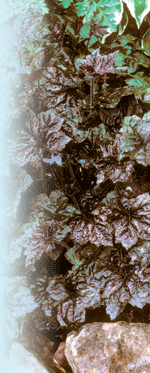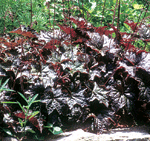Heuchera Provides Bold, Colorful Foliage
go.ncsu.edu/readext?234315
en Español / em Português
El inglés es el idioma de control de esta página. En la medida en que haya algún conflicto entre la traducción al inglés y la traducción, el inglés prevalece.
Al hacer clic en el enlace de traducción se activa un servicio de traducción gratuito para convertir la página al español. Al igual que con cualquier traducción por Internet, la conversión no es sensible al contexto y puede que no traduzca el texto en su significado original. NC State Extension no garantiza la exactitud del texto traducido. Por favor, tenga en cuenta que algunas aplicaciones y/o servicios pueden no funcionar como se espera cuando se traducen.
Português
Inglês é o idioma de controle desta página. Na medida que haja algum conflito entre o texto original em Inglês e a tradução, o Inglês prevalece.
Ao clicar no link de tradução, um serviço gratuito de tradução será ativado para converter a página para o Português. Como em qualquer tradução pela internet, a conversão não é sensivel ao contexto e pode não ocorrer a tradução para o significado orginal. O serviço de Extensão da Carolina do Norte (NC State Extension) não garante a exatidão do texto traduzido. Por favor, observe que algumas funções ou serviços podem não funcionar como esperado após a tradução.
English
English is the controlling language of this page. To the extent there is any conflict between the English text and the translation, English controls.
Clicking on the translation link activates a free translation service to convert the page to Spanish. As with any Internet translation, the conversion is not context-sensitive and may not translate the text to its original meaning. NC State Extension does not guarantee the accuracy of the translated text. Please note that some applications and/or services may not function as expected when translated.
Collapse ▲
‘Palace Purple’
Robert E. Lyons ©
Heuchera is an interesting family of perennials that is comprised of more than 50 species that are native to North America. Heuchera, commonly known as coralbells or alumroot, is hardy from zones 4 to 9 depending on species and cultivar.
Coralbells and alumroot are primarily grown for their foliage, but many species also have attractive flowers that are favored by butterflies. Flowering usually begins in June and continues throughout the growing season. Depending on the variety selected, coralbells can be grown in sun or shade. Many varieties develop their best leaf color in full sun. They prefer moist, well-drained soils that have been amended with organic matter like leaf compost or pine bark fines. There are few insect or disease problems, but leaf scorch can be a problem for plants grown in the full sun during hot, dry conditions.
The increased interest in coralbells was sparked when Heuchera micrantha‘Palace Purple’ was selected by the Perennial Plant Association as Perennial of the Year in 1991. They make a wonderful addition to the garden and can be used as edgings in perennial borders and group plantings. The lighter colored varieties stand out nicely in a lightly shaded garden.

‘Palace Purple’
Robert E. Lyons ©
‘Palace Purple’ is perhaps the best-known variety, but there are a number of new varieties on the market that are worth considering for your garden.Heuchera ‘Amber Waves’ has true amber-colored foliage that is brightest in the spring and darkens through the season.
Heuchera ‘Canyon Belle’ has clusters of bright red flowers above green foliage and works well in the shade garden. Heuchera ‘Green Spice’ has green leaves with dark purple veins that turn amber in the fall. Heuchera‘Plum Pudding’ has excellent shiny deep purple foliage with pinkish-white blooms.
The JC Raulston Arboretum (JCRA) has a number of species on display including H. americana, H. richardsonii and H. villosa as well as several hybrids. Plan on touring the JCRA the next time you are in Raleigh for ideas on how to use Heuchera in the garden.


